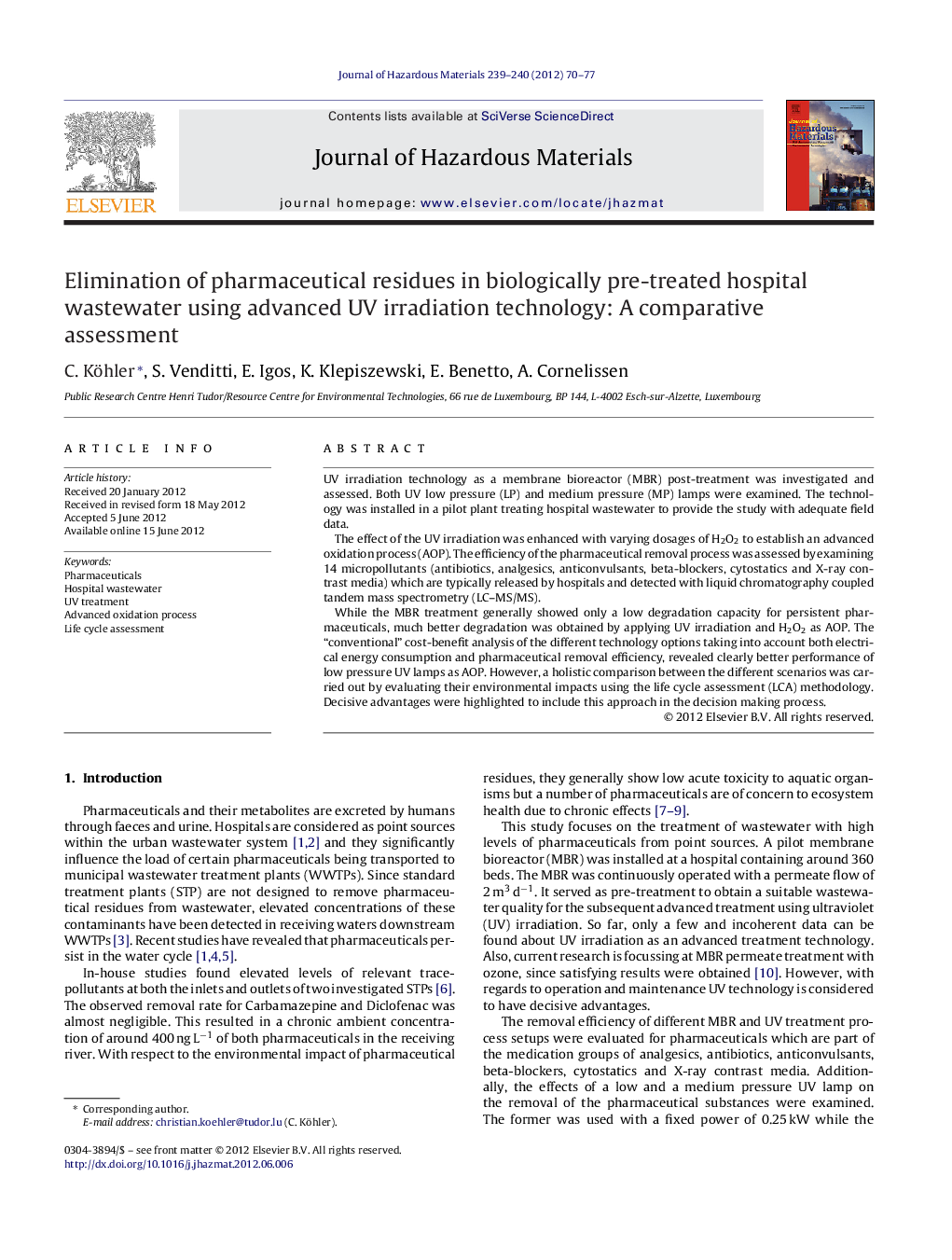| Article ID | Journal | Published Year | Pages | File Type |
|---|---|---|---|---|
| 577728 | Journal of Hazardous Materials | 2012 | 8 Pages |
Abstract
While the MBR treatment generally showed only a low degradation capacity for persistent pharmaceuticals, much better degradation was obtained by applying UV irradiation and H2O2 as AOP. The “conventional” cost-benefit analysis of the different technology options taking into account both electrical energy consumption and pharmaceutical removal efficiency, revealed clearly better performance of low pressure UV lamps as AOP. However, a holistic comparison between the different scenarios was carried out by evaluating their environmental impacts using the life cycle assessment (LCA) methodology. Decisive advantages were highlighted to include this approach in the decision making process.
Keywords
Related Topics
Physical Sciences and Engineering
Chemical Engineering
Chemical Health and Safety
Authors
C. Köhler, S. Venditti, E. Igos, K. Klepiszewski, E. Benetto, A. Cornelissen,
